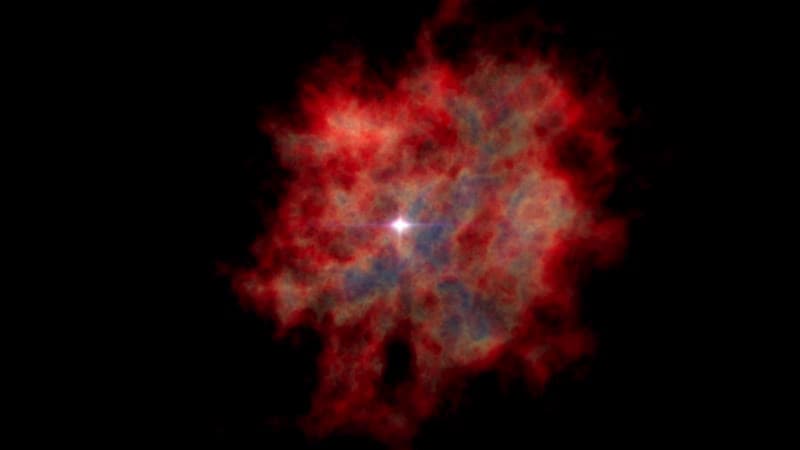Supernova with Expanding Shell

Stars which are 8 times or more massive than our Sun end their lives in a most spectacular way; they go supernova. A supernova explosion will occur when there is no longer enough fuel for the fusion process in the core of the star to create an outward pressure which combats the inward gravitational pull of the star's great mass. In less than a second, the star begins the final phase of gravitational collapse. The core temperature rises to over 100 billion degrees as the iron atoms are crushed together. The repulsive force between the nuclei is overcome by the force of gravity. So the core compresses but then recoils. The energy of the recoil is transferred to the envelope of the star, which then explodes and produces a shock wave. As the shock encounters material in the star's outer layers, the material is heated, fusing to form new elements and radioactive isotopes. The shock then propels that matter out into space. The material that is exploded away from the star is now known as a supernova remnant.